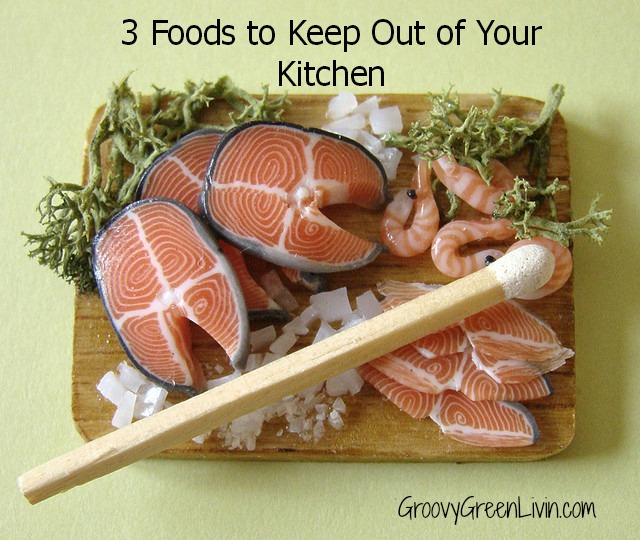I think most of us can agree that not all foods are created equal. Keeping up with the latest and greatest information on food can be somewhat of a challenge. There’s so much information floating around out there, making it hard to know where to begin and what to believe.
I received an email last week asking for advice on what foods should be avoided. While many foods could easily be on this list, I decided to put together my top 3 foods that I try to keep out of my kitchen.
Canned Tomatoes
Most epoxy linings in canned foods contains bisphenol A (BPA) [2] which leaches into the contents of the can, some at very high levels. An FDA study [3] found canned green beans contaminated with as much as 730 parts per billion of BPA. Some manufacturers are working hard and have been successful [4] in finding an alternative to BPA [5] (which could be just as bad as BPA!) in tin can liners, but tomatoes are acidic so the packaging options are limited. Almost all canned tomatoes have BPA in the lining.
According to the Breast Cancer Fund-
Exposure to BPA, used to make the epoxy-resin linings of metal food cans, has been linked in lab studies to breast and prostate cancer, infertility, early puberty in girls, type-2 diabetes, obesity and attention deficit hyperactivity disorder. Childhood exposure is of concern because this endocrine-disrupting chemical can affect children’s hormonal systems during development and set the stage for later‐life diseases.
Solution
Grow your own tomatoes! If gardening isn’t your thing look for tomatoes packaged in glass containers.
Farm Raised Salmon
Environmental groups [6] such as Seafood Watch and the Environmental Defense Fund, have put nearly all farmed salmon on their “red” or “avoid” list. Farm-raised fish [7]are generally placed in crowded cages and given antibiotics and exposed to pesticides. Their living environment is less than desirable. Wild fish are out in the wild, living and swimming in open oceans as they were meant to be. Wild fish aren’t exposed to the same toxins as their farm-raised cousins.
Farm-raised salmon generally has artificial color added to give it that nice pink color. When salmon are raised in a farm-raised environment they are fed “fish meal”, made up of ground fish parts, and as a result, the fish color is a shade of gray rather than pink. Coloring is added because consumers expect their salmon to look pink.
Some bad news: Frankenfish [8] (genetically engeneered [9] salmon) could be on your dinner plate by the end of the year. If the US Food and Drug Administration (FDA) approves this we will have no way of knowing whether the salmon we are eating is genetically engineered because at this time there’s no labeling requirement.
Solution
Look for wild salmon at the market, which should be clearly labeled. All Alaskan salmon is wild-caught. Support current actions to demand GMO labeling as listed over at GMO Inside.
Microwave Popcorn
Making a bag of microwave popcorn is about as convenient as it gets. Put the bag in the microwave and in about 4 minutes you have a bag of delicious popcorn. It turns out that microwave popcorn is one of those foods that just doesn’t belong in your kitchen.
The lining of the microwave popcorn bag contains PFOA [10], a chemical that has been linked to cancer in animals. The chemical was also found to have been associated [11] with a lower vaccine response in children, making them more vulnerable to disease. The Environmental Protection Agency says that PFOA is a “likely carcinogen” and is likely to cause cancer in humans, although no definitive studies have been released yet.
There’s another chemical in the actual microwave popcorn called diacetyl, which is found in the imitation butter flavoring. When heated the fumes released from a bag of microwave popcorn contain this chemical and have caused microwave popcorn factory workers to have a respiratory disease called “popcorn workers lung”.
Some popcorn manufacturers have attempted to replace diacetyl with substitute ingredients, but findings show [10] that these replacements are just as bad or worse.
Solution
Make your popcorn the old fashioned way [12]-in a pot with some salt and oil. Another solution is to invest in an air popper for a low-calorie, healthy snack.
What other foods should be on this list?
photo credit: PetitPlat – Stephanie Kilgast [13] via photopin [14] cc [15]
